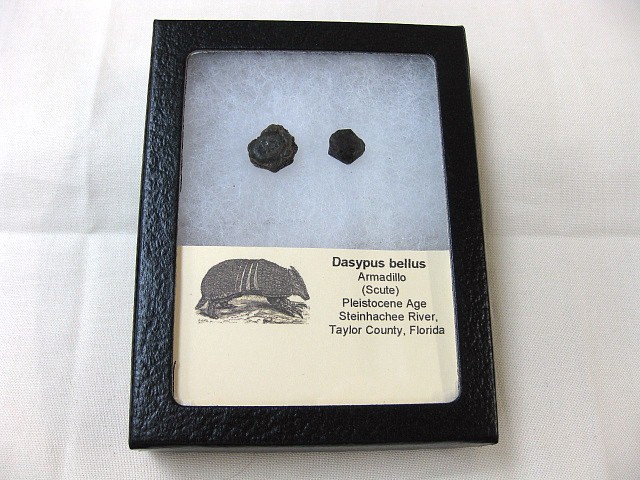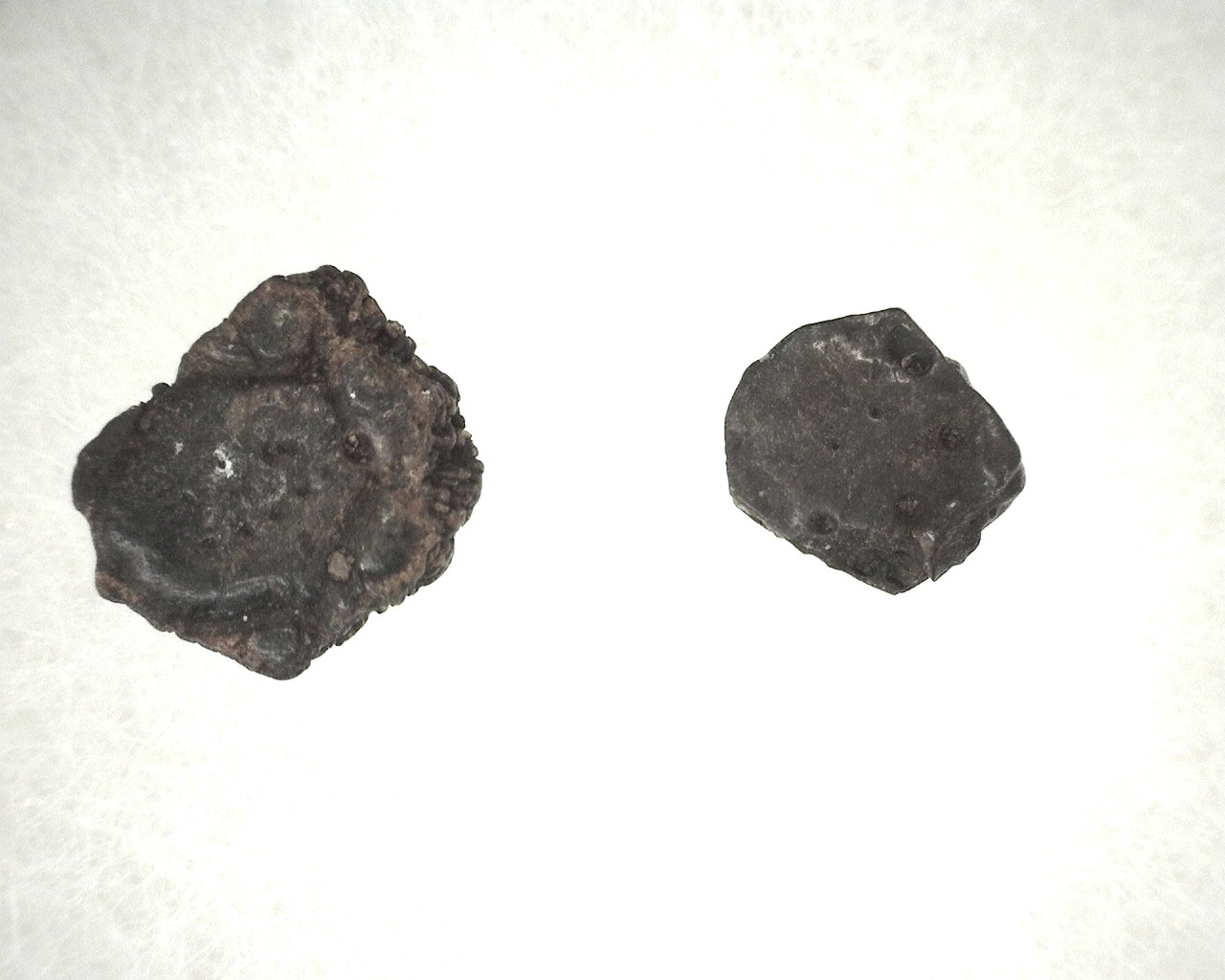Description
- Dasypus bellus
- Scutes (Osteoderms)
- Pleistocene Age
- Taylor County, Florida
- You will receive this pair of scutes. They will average approx. 3/8″ – 1/2″ in size and will come in the 3.25″ x 4.25″ Riker Mount with Label as Shown
These are some EXTREMELY RARE SCUTES!! They are from the much smaller Armadillo “Dasypus bellus”. The body of the armadillo was covered with armor composed of thousands of bony scutes. These were probably very effective in protecting the slow armadillo from predators.
Dasypus bellus, the beautiful armadillo, is an extinct armadillo species endemic to North America and South America from the Pleistocene, living from 1.8 mya—11,000 years ago, existing for approximately 1.789 million years. Slightly larger than its living relative, the nine-banded armadillo, its fossils are known from Bolivia, Argentina, and Brazil to Florida. Records extend west to New Mexico and north to Iowa and Indiana. The beautiful armadillo was large approximately 1.2 m long . It was about twice the size of the nine-banded armadillo. The osteoderms of the shell and the limb bones of D. bellus are about two to two and a half times the extent of those of the living modern nine-banded armadillo D. novemcinctus. The small D. bellus overlapped in size with the D.novemcinctus. The body size of D. bellus decreased during the late Pleistocene, suggesting body size was variable. Fossils of D. bellus have been found at many sites in Florida, including caves, sinkholes, river sites, coastal, and lake deposits. The most frequent type of fossil found are isolated osteoderms. The most common types of osteoderms that have been found are the hexagonal elements, which include most of osteoderms covering the shoulder or pectoral regions.






